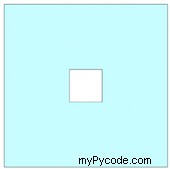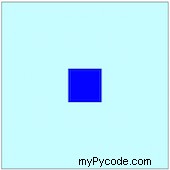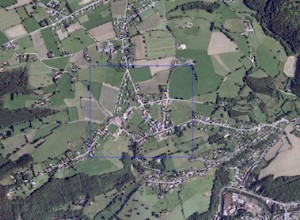Le format shapefile ne connaît pas la géométrie "MultiPolygone", remplacée par une géométrie Polygone.
J'utilise ici Fiona et Shapely (beaucoup plus simple que ogr, nombreux exemples dans GIS.SE)
data = {"type": "FeatureCollection","features": [{"geometry": {"type": "MultiPolygon", "coordinates": [[[[-98.7, 49.6], [-98.7, 49.7], [-98.8, 49.7], [-98.8, 49.6], [-98.7, 49.6]]],[[[-98.74, 49.64], [-98.74, 49.66], [-98.76, 49.66], [-98.76, 49.64], [-98.74, 49.64]]]]},"type": "Feature","properties": {}}]}
from shapely.geometry import shape, mapping
multi = shape(data['features'][0]['geometry'])
print multi.wkt
MULTIPOLYGON (((-98.7 49.6, -98.7 49.7, -98.8 49.7, -98.8 49.6, -98.7 49.6)), ((-98.74 49.64, -98.74 49.66, -98.76 49.66, -98.76 49.64, -98.74 49.64)))
Il y a 2 polygones dans le MultiPolygon
for poly in multi:
print poly
POLYGON ((-98.7 49.6, -98.7 49.7, -98.8 49.7, -98.8 49.6, -98.7 49.6))
POLYGON ((-98.74 49.64, -98.74 49.66, -98.76 49.66, -98.76 49.64, -98.74 49.64))
Enregistrez la géométrie dans un fichier de formes
import fiona
# schema of the shapefile
schema = {'geometry': 'MultiPolygon','properties': {'id': 'int'}}
geom = data['features'][0]['geometry']
print geom
{'type': 'MultiPolygon', 'coordinates': [[[[-98.7, 49.6], [-98.7, 49.7], [-98.8, 49.7], [-98.8, 49.6], [-98.7, 49.6]]], [[[-98.74, 49.64], [-98.74, 49.66], [-98.76, 49.66], [-98.76, 49.64], [-98.74, 49.64]]]]}
# save to a shapefile
with fiona.open('multipol.shp', 'w', 'ESRI Shapefile', schema) as output:
output.write({'geometry':geom,'properties': {'id':1}})
Ouvrez maintenant le fichier de formes
multi = fiona.open('multipol.shp')
# first feature
first = multi.next()
print first
{'geometry': {'type': 'Polygon', 'coordinates': [[(-98.7, 49.6), (-98.8, 49.6), (-98.8, 49.7), (-98.7, 49.7), (-98.7, 49.6)], [(-98.74, 49.64), (-98.74, 49.66), (-98.76, 49.66), (-98.76, 49.64), (-98.74, 49.64)]]}, 'type': 'Feature', 'id': '0', 'properties': OrderedDict([(u'id', 1)])}

Par conséquent le MultiPolygon composé de deux Polygons est remplacé dans le shapefile par un Polygon composé de deux parties =un Polygon avec trou
coords = first['geometry']['coordinates']
for coord in coord:
print coord
[(-98.7, 49.6), (-98.8, 49.6), (-98.8, 49.7), (-98.7, 49.7), (-98.7, 49.6)]
[(-98.74, 49.64), (-98.74, 49.66), (-98.76, 49.66), (-98.76, 49.64), (-98.74, 49.64)]
Conclusion
Modifiez votre géométrie ou n'utilisez pas de shapefiles
schema = {'geometry': 'Polygon','properties': {'id': 'int'}}
# save to a shapefile
with fiona.open('polys.shp', 'w', 'ESRI Shapefile', schema) as output:
# split multipolygon
for poly in multi:
output.write({'geometry':mapping(poly),'properties': {'id':1}})



